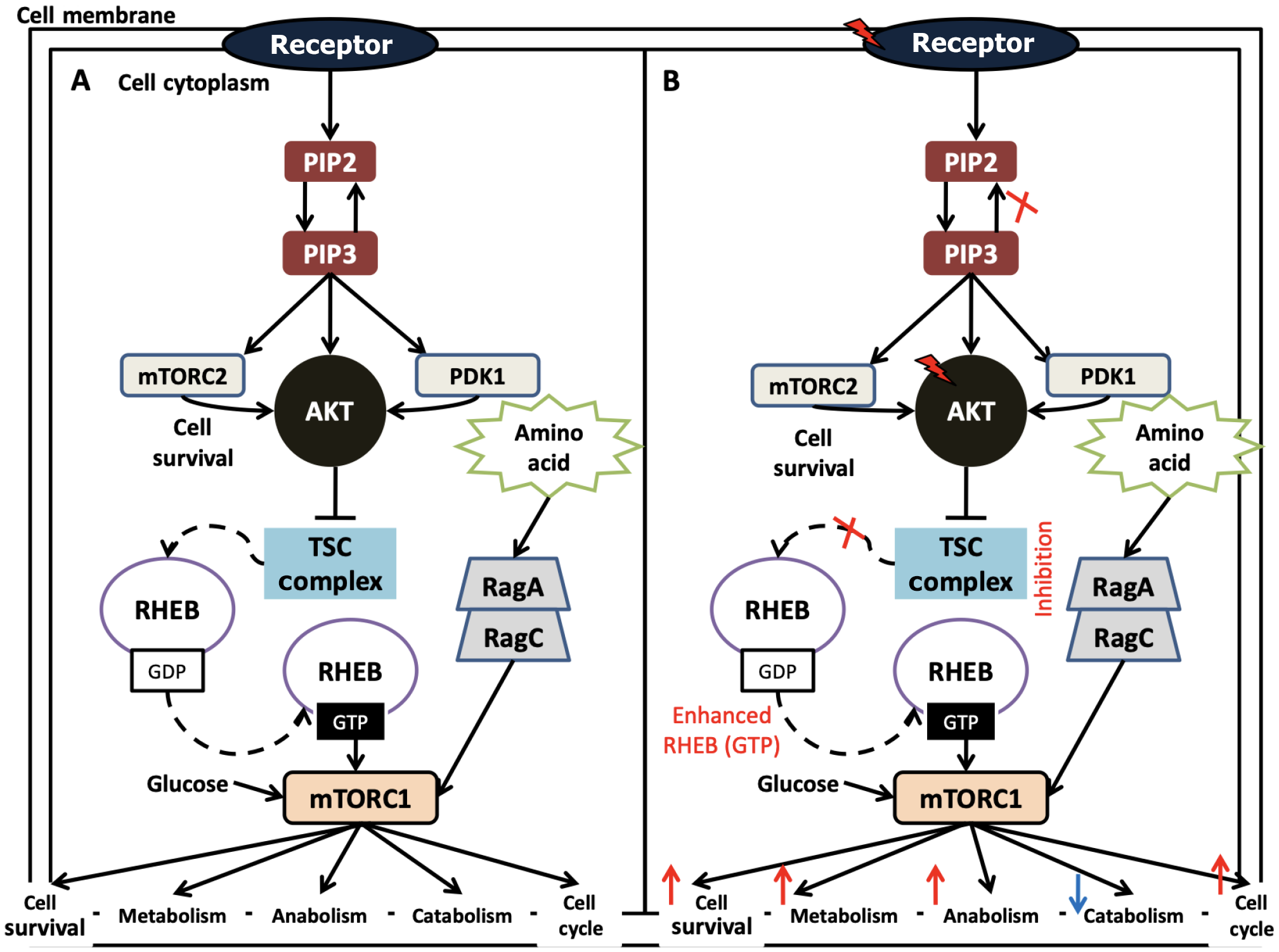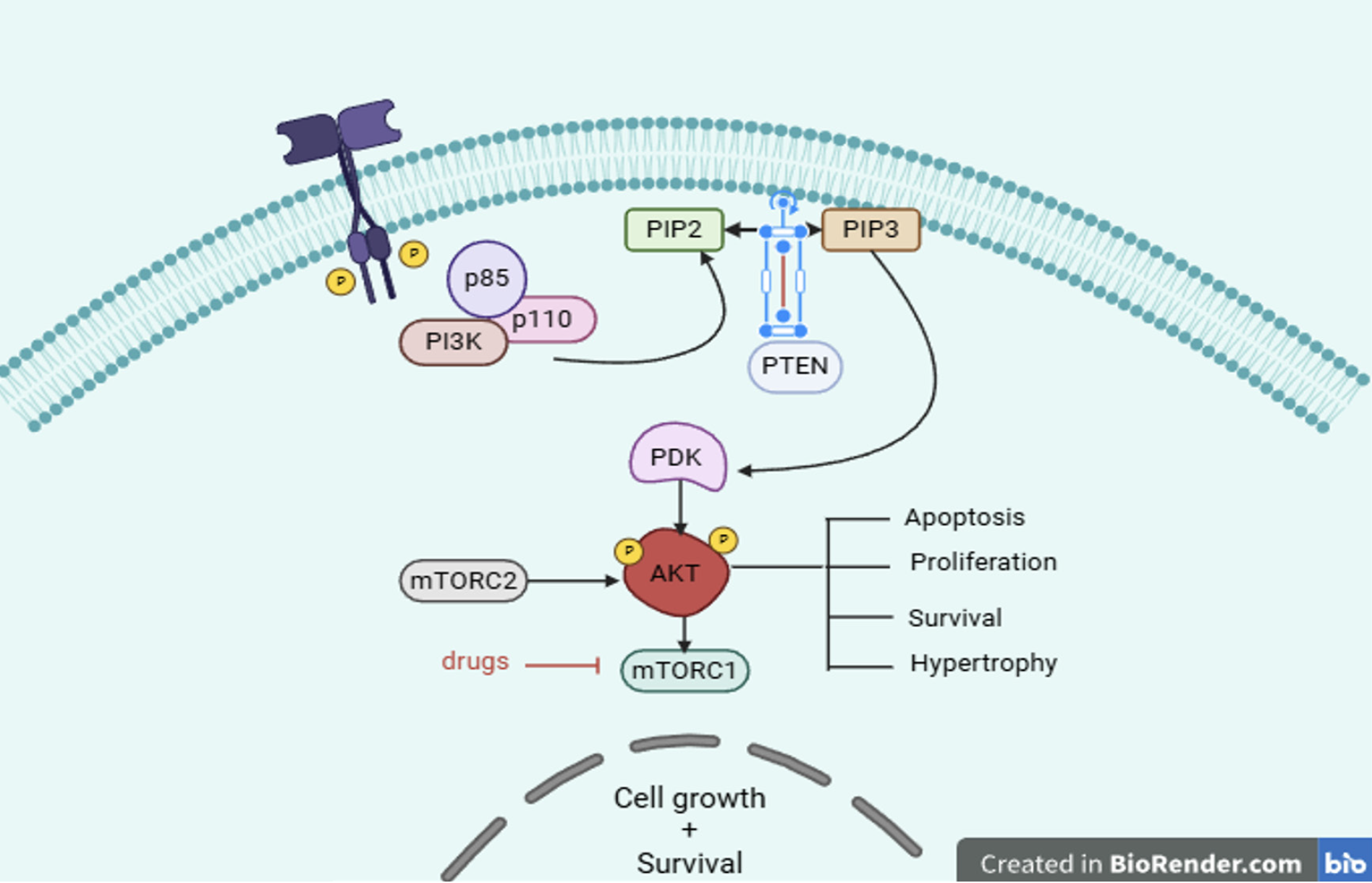Copyright
©The Author(s) 2025.
World J Exp Med. Sep 20, 2025; 15(3): 104678
Published online Sep 20, 2025. doi: 10.5493/wjem.v15.i3.104678
Published online Sep 20, 2025. doi: 10.5493/wjem.v15.i3.104678
Figure 1 Chemical structure of flavonoids and its type.
Figure 2 Schematic representation of the phosphoinositide 3-kinase/ mammalian target of rapamycin/ribosomal protein S6 kinase pathway illustrates that ribosomal protein S6 kinase is located downstream of phosphoinositide 3-kinase and mammalian target of rapamycin.
p70S6K: Ribosomal protein S6 kinase; PI3K: Phosphoinositide 3-kinase; mTOR: Mammalian target of rapamycin; PIP2: Phosphorylinositol 4,5-bisphosphate; PIP3: Phosphatidylinositol 3,4,5-trisphosphate.
Figure 3 The PAM signalling pathway and its downstream function.
A: PAM pathway downstream function in normal cell; B: PAM pathway downstream function in cancer cell. PI3K: Phosphoinositide 3-kinase; mTOR: Mammalian target of rapamycin; PIP2: Phosphorylinositol 4,5-bisphosphate; PIP3: Phosphatidylinositol 3,4,5-trisphosphate.
Figure 4 Biochemical mechanism of phosphoinositide 3-kinase, phosphatase and tensin homolog deleted on chromosome 10 and protein kinase B regulation.
PI3K: Phosphoinositide 3-kinase; mTOR: Mammalian target of rapamycin; PIP2: Phosphorylinositol 4,5-bisphosphate; PIP3: Phosphatidylinositol 3,4,5-trisphosphate; AKT: Protein kinase B; PTEN: Phosphatase and tensin homolog deleted on chromosome 10. Created in BioRender.com.
- Citation: Garg G, Chaudhary S, Khatana K, Bharadwaj A. Flavonoids extract from Vitex negundo inhibit autophagy by targeting PI3K/AKT/mTOR/p70S6K/ULK signaling cascade in cancerous cells. World J Exp Med 2025; 15(3): 104678
- URL: https://www.wjgnet.com/2220-315X/full/v15/i3/104678.htm
- DOI: https://dx.doi.org/10.5493/wjem.v15.i3.104678












